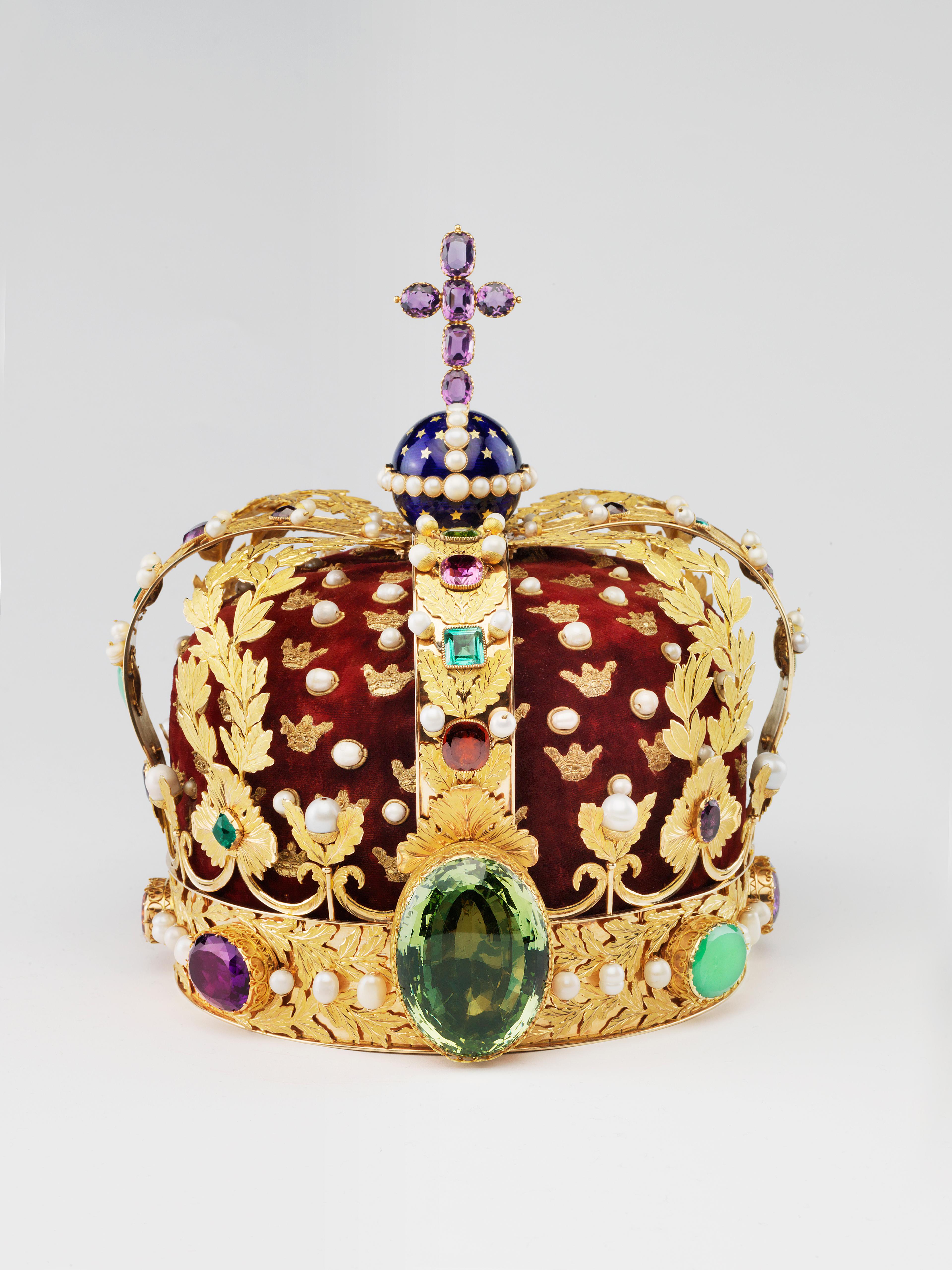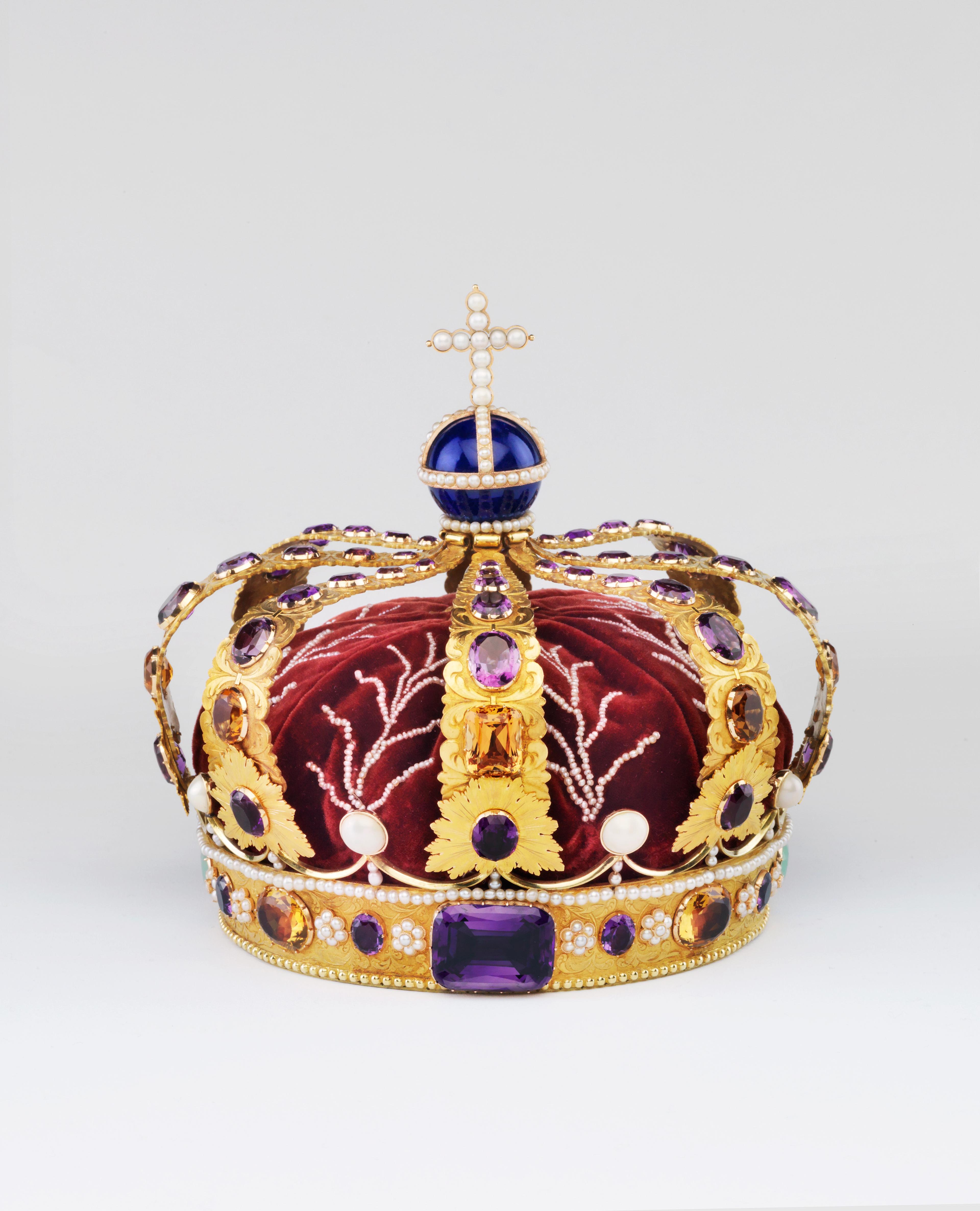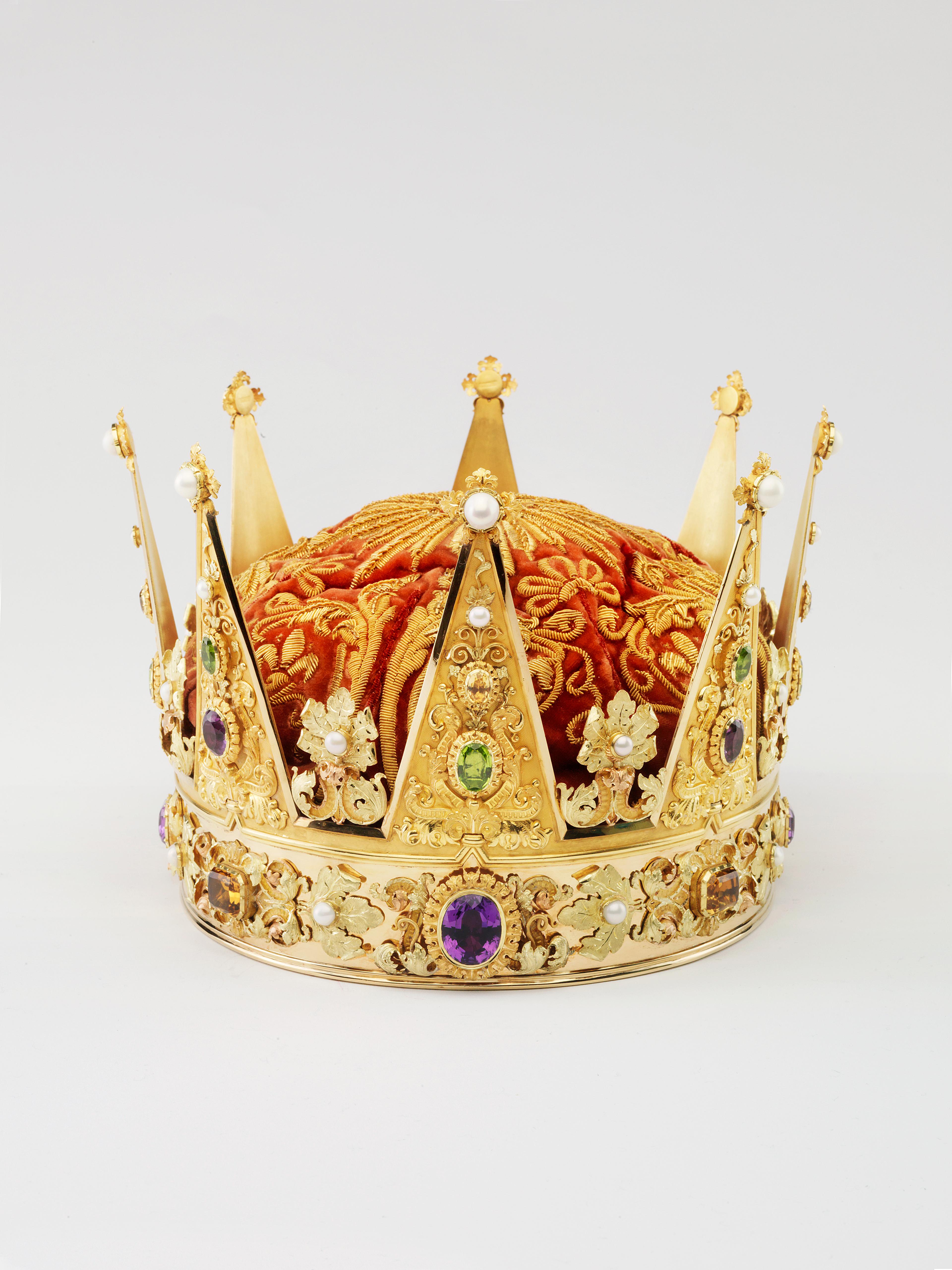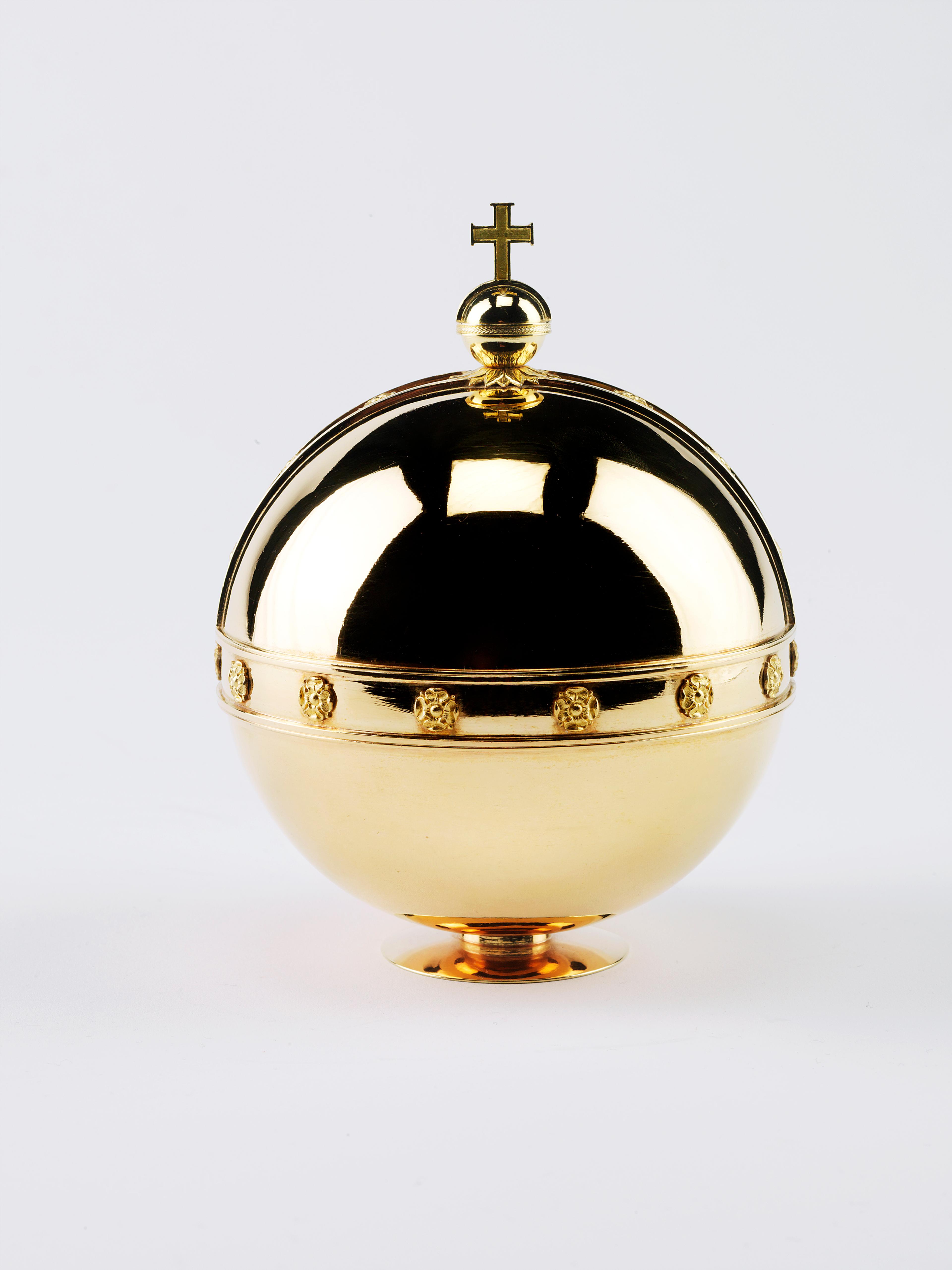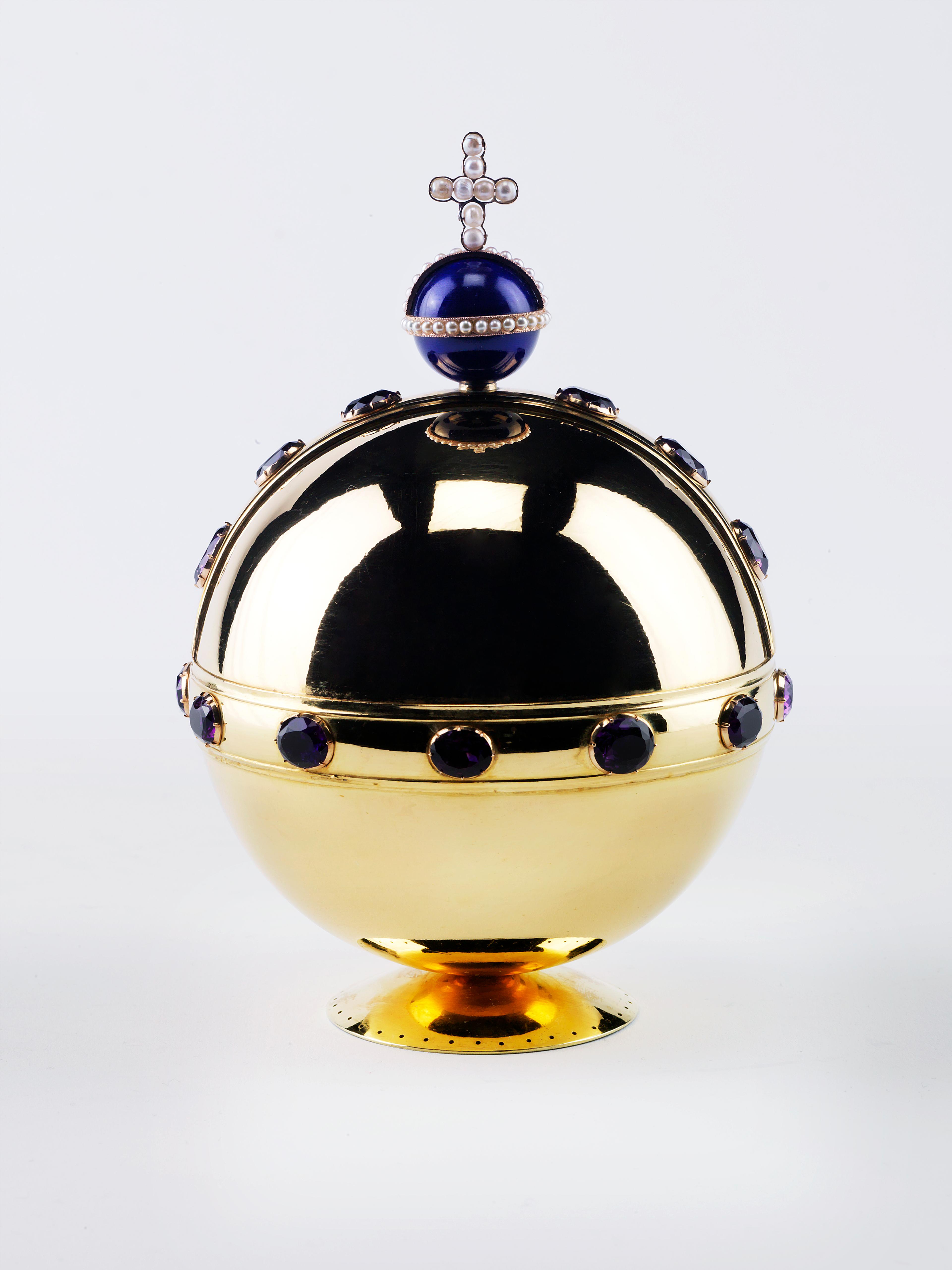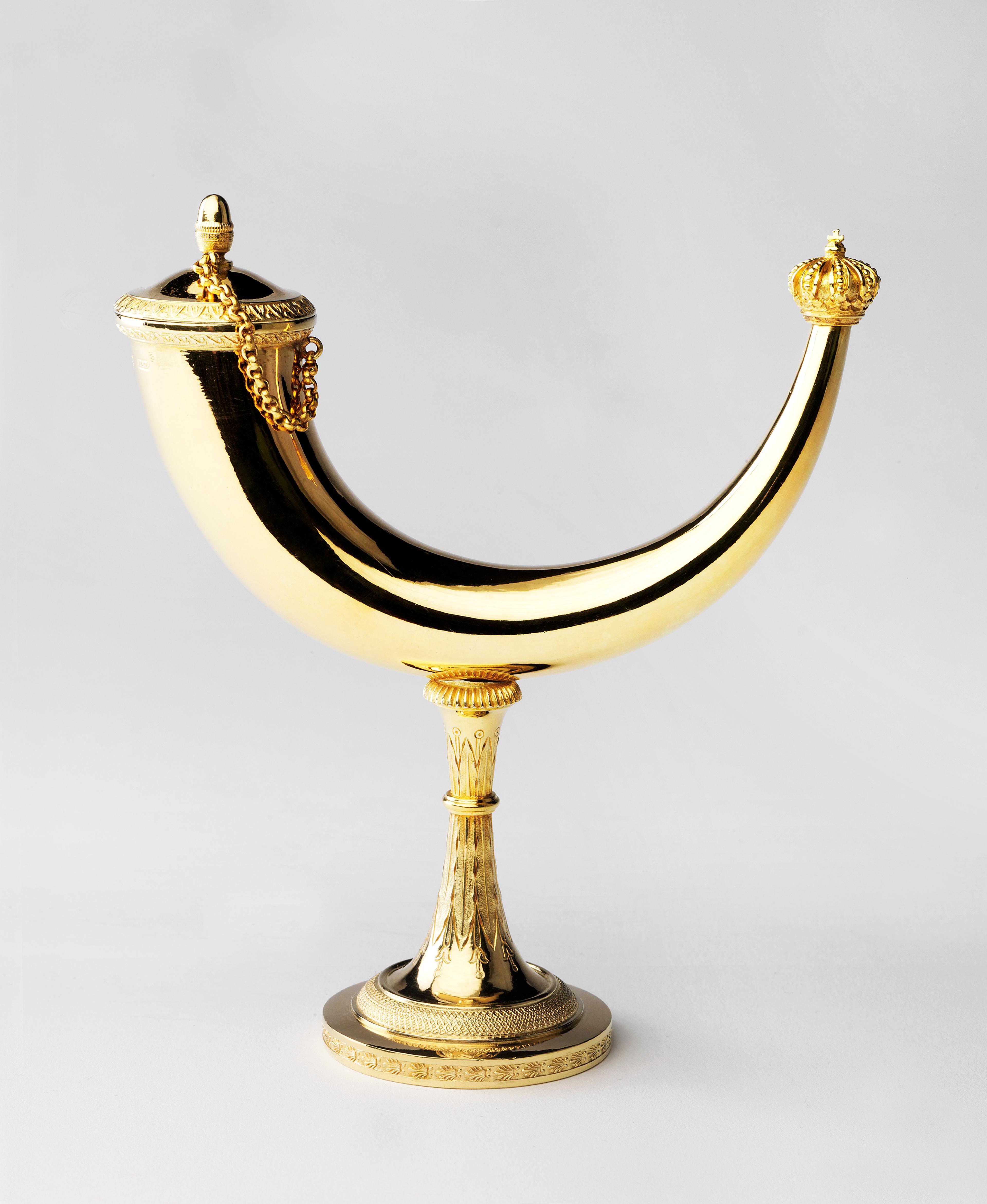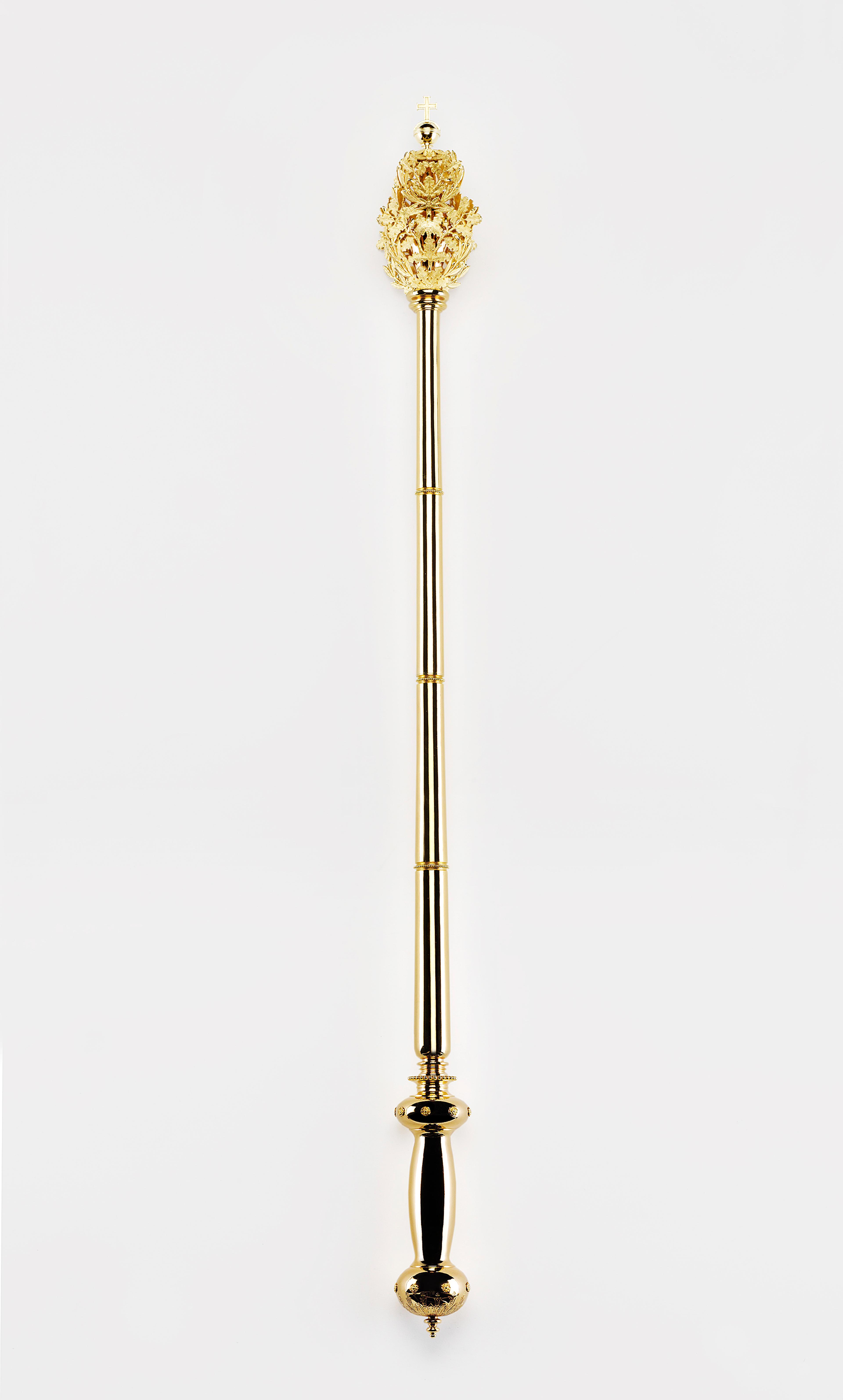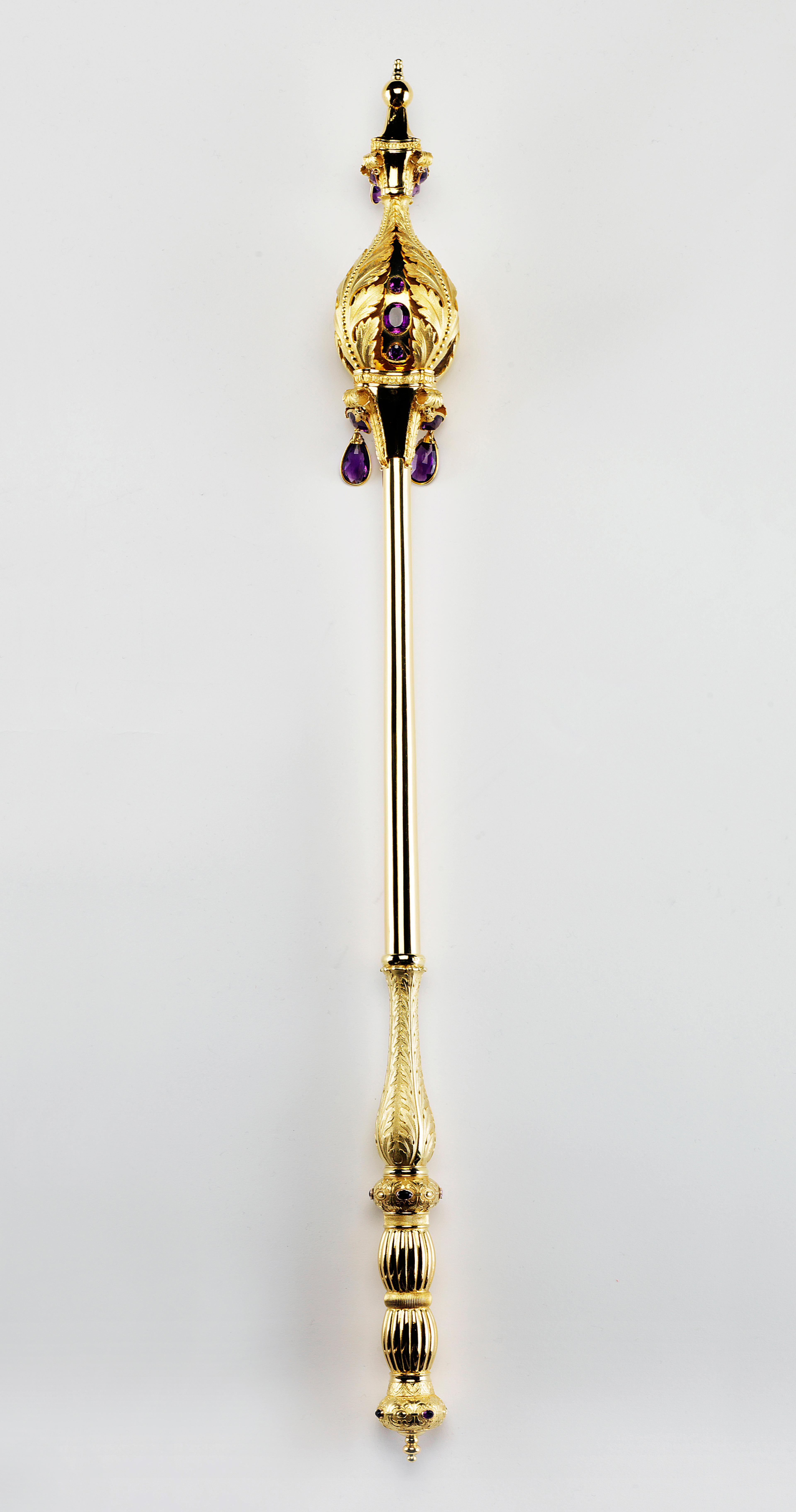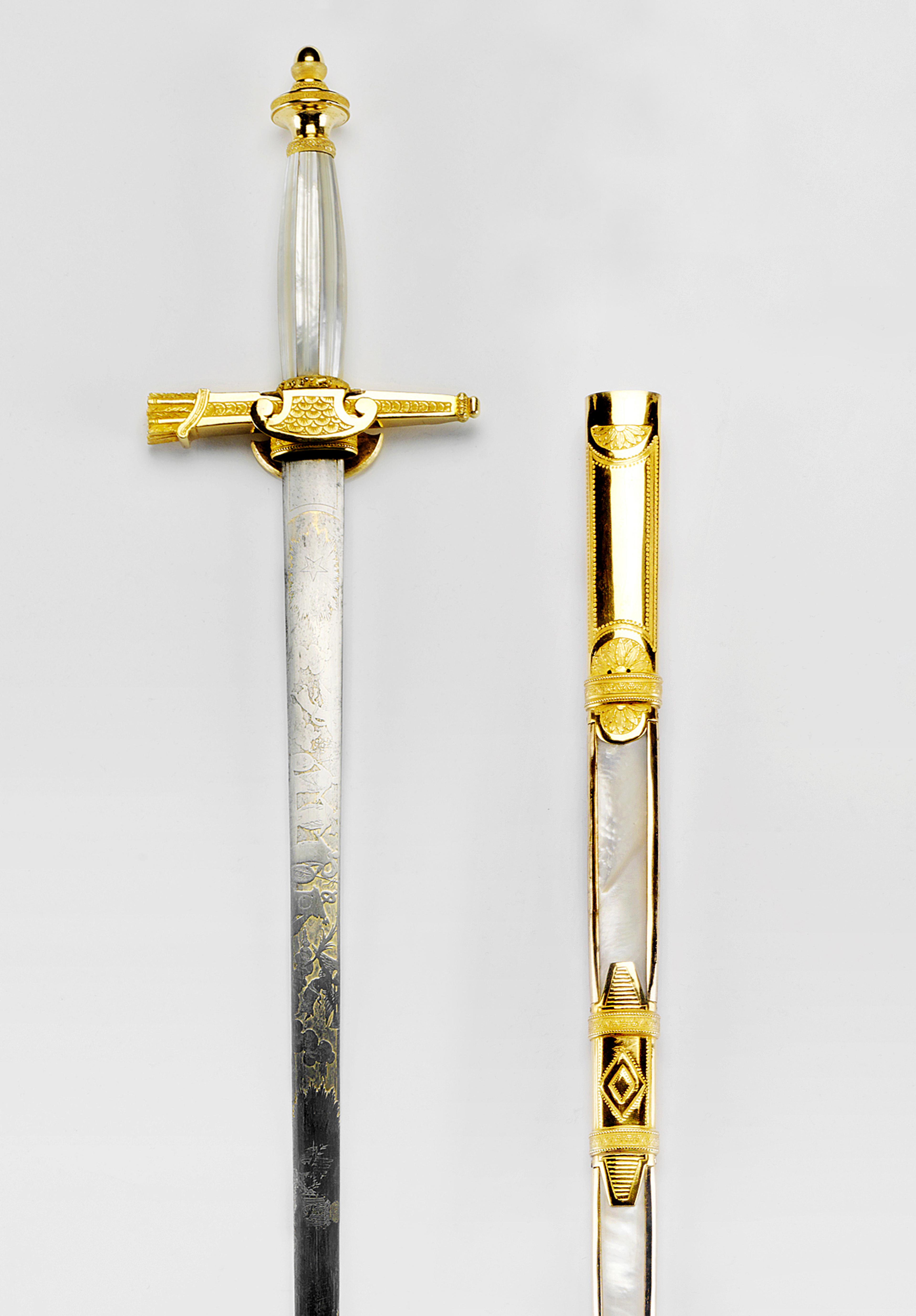The Norwegian Regalia
The regalia are symbols of the king's power and majesty, and of the monarchy as a form of government. The word "regalia" is derived from the Latin "Rex" meaning "worthy of a king".
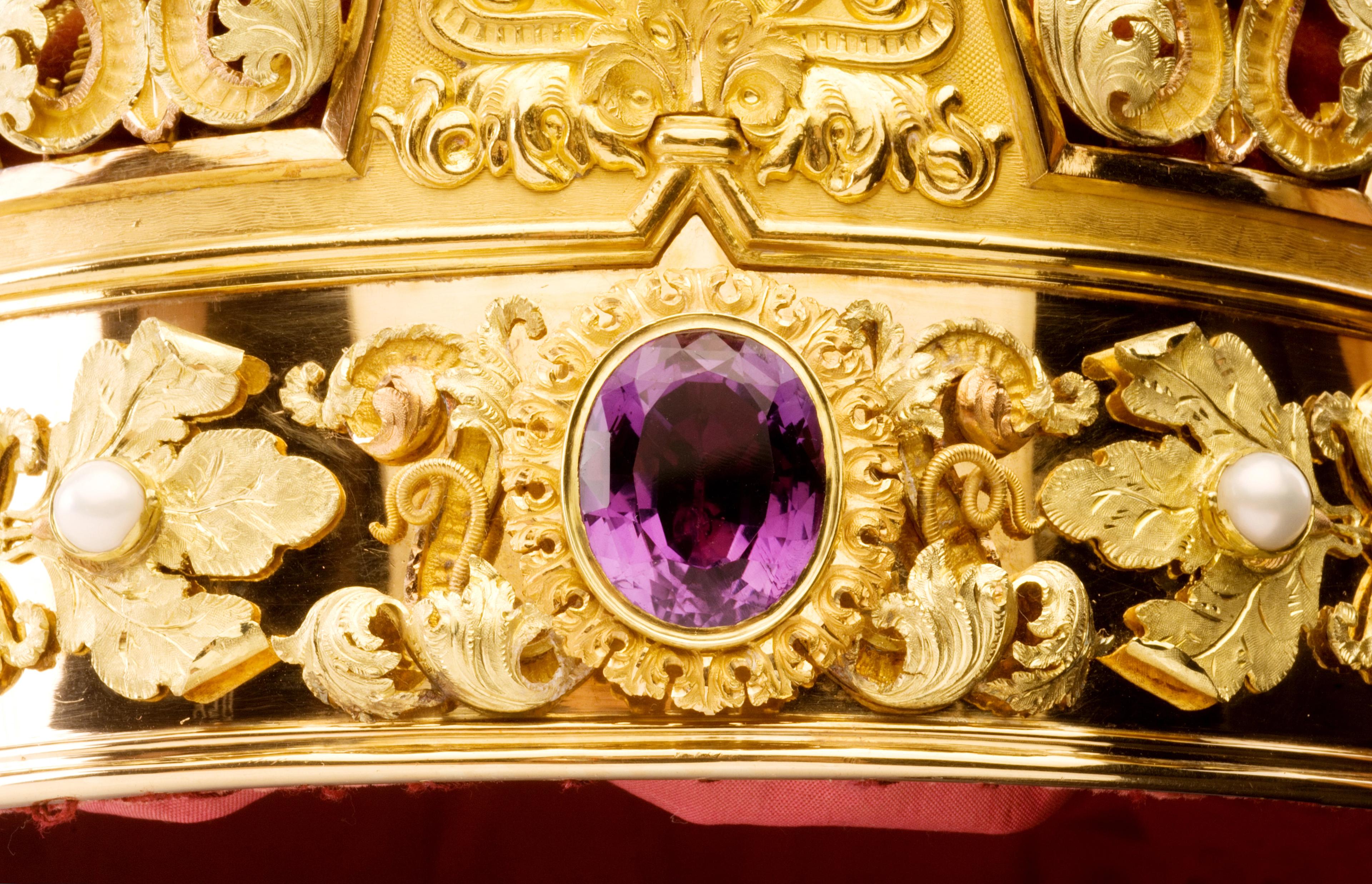
Historically, the most important function of the regalia was associated with coronations, the formal investiture of the sovereign to his status as king. In 1908 the Constitution was amended, abolishing the Article on coronation. Thus, at later ceremonies, the crowns have been placed on the high altar during the Service of Consecration and Blessing – but never placed on the head of the sovereigns. The Norwegian royal regalia and other coronation objects are on permanent display in the Archbishop’s Palace in Trondheim.
Coronations of the Middle Ages
The first Norwegian king to be crowned was Magnus Erlingsson in 1163. But the original Norwegian regalia have been lost. Legend has it that Norway’s last Roman Catholic archbishop, Olav Engelbrekston, took the King’s crown and the Sword of state with him when he fled the country following the Reformation in 1537. He died shortly after, and it is not known what became of the regalia.
New Norwegian regalia
During Norway’s union with Denmark, coronations of the Dano-Norwegian kings were held in Denmark. Consequently, when Carl Johan was preparing for his coronation in 1818 Norway did not have its own regalia. The king solved this problem by paying for the making of the essential items himself.
The Norwegian regalia comprise the King’s Crown, the Queen’s Crown and the Crown of the Heir Apparent; the King’s and Queen’s orbs and sceptres; the anointing horn and the Sword of State; as well as two coronation robes and the Royal Standard.
The Crowns
The word "crown" is derived from the Latin “corona” meaning wreath. Originating in Asia and adopted in Europe, the crown has been used as a symbol of power and majesty for several thousand years.
When the Norwegian medieval kings were crowned, it was probably with an open crown. From the late sixteenth century, however, crowns closed at the top by means of arches became common, both for the monarch and for the monarch’s consort. The Norwegian crowns from the period after 1814 are arched crowns, but the crown of the heir to the throne is open to mark the difference in rank.
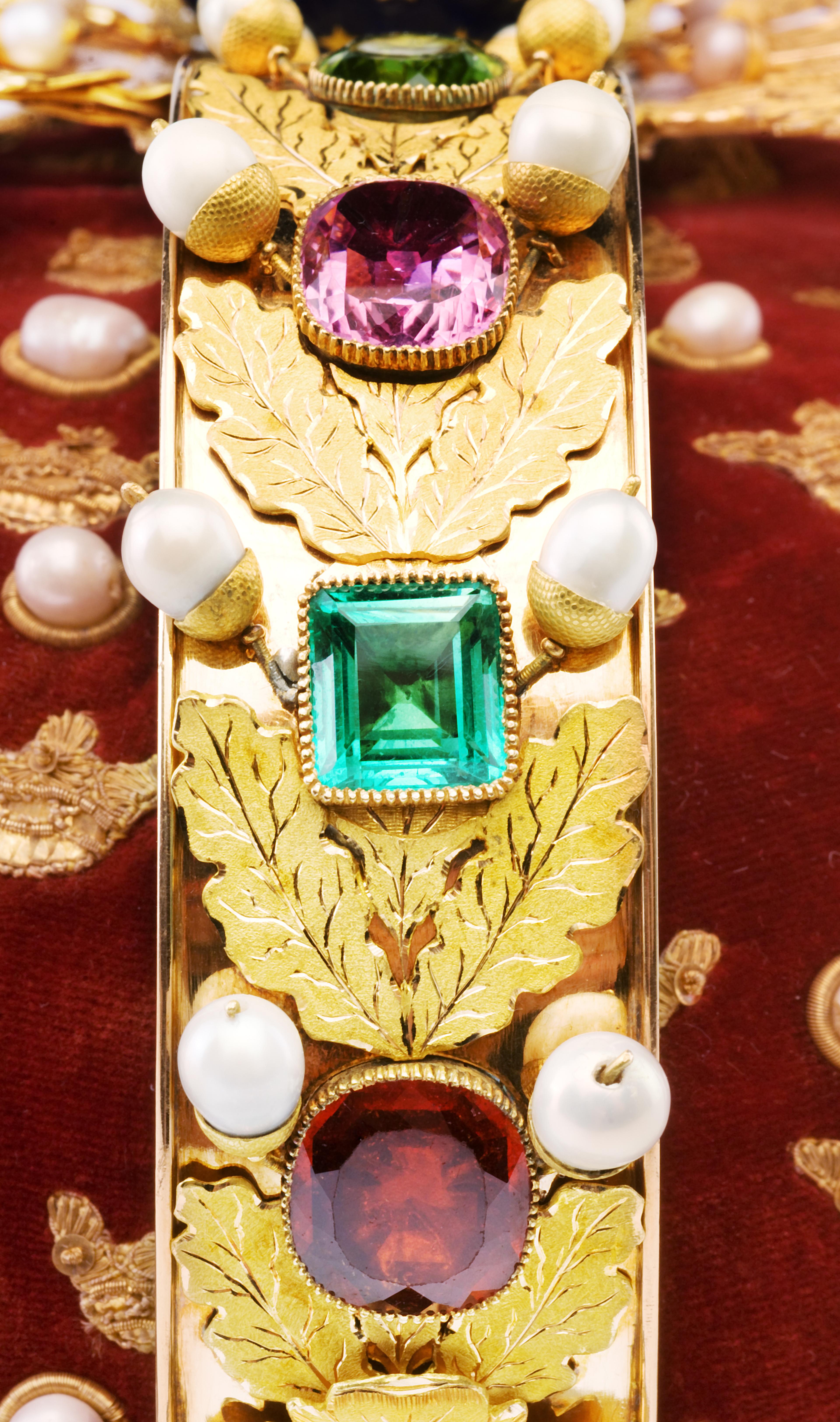
The Norwegian Regalia: The King's Crown
The King's Crown
The Norwegian King’s Crown was made by the Swedish goldsmith. King Carl Johan commissioned and paid for the crown to be used in his own coronation in 1818. The crown has been used in the coronation of four kings and has played a part in two consecration ceremonies. Upon the death of a monarch, the crown is placed on the casket during the funeral service.
Design
The King’s Crown is an arched crown, with eight hoops rising up from the crown ring and joining in the middle under an orb of blue enamel with gold stars and a band of pearls. At the top rests a cross of six amethysts. Four of the hoops are flat and shaped like oak leaves. The four other hoops are filigreed and shaped like bay leaves.
In the middle of the crown ring is a large, green tourmaline, said to be a gift to the King from the Brazilian consul in Stockholm.
The cap of purple velvet is decorated with small crowns and 50 pearls.
Materials
The crown is made of 20-carat gold, pearls and assorted gemstones such as amethysts, opals, peridots, chrysophrases, topazes, tourmalines, sapphires and emeralds.
Height: 24.5 cm
Diameter: 18.5 cm
Weight: 1,500 g

The Norwegian Regalia: The Queen's Crown
The Queen's Crown
The Queen's crown was fashioned by Erik Lundberg and Marc Giron in Stockholm for the planned coronation in 1830 of Queen Désirée. She was the wife of King Carl Johan, but was not crowned alongside her husband in 1818. However, the coronation of Queen Désirée never took place, and the Queen’s Crown was first used in 1860 during the coronation of Queen Louise.
Design
The Queen’s Crown is also an arched crown. It consists of eight hoops that join at the top underneath an orb of blue enamel and a band and cross of pearls. Another band of pearls, 153 in all, line the upper edge of the crown.
The cap is sewn of purple velvet and is embellished with stylised flames embroidered with tiny pearls.
The central gemstone in the crown is a large amethyst.
Materials
The crown is made of silver with gold gilding and settings, and decorated with amethysts, citrines, chrysophrases, topazes and numerous pearls.
Height: 17 cm
Diameter: 14 cm
Weight: 534 g
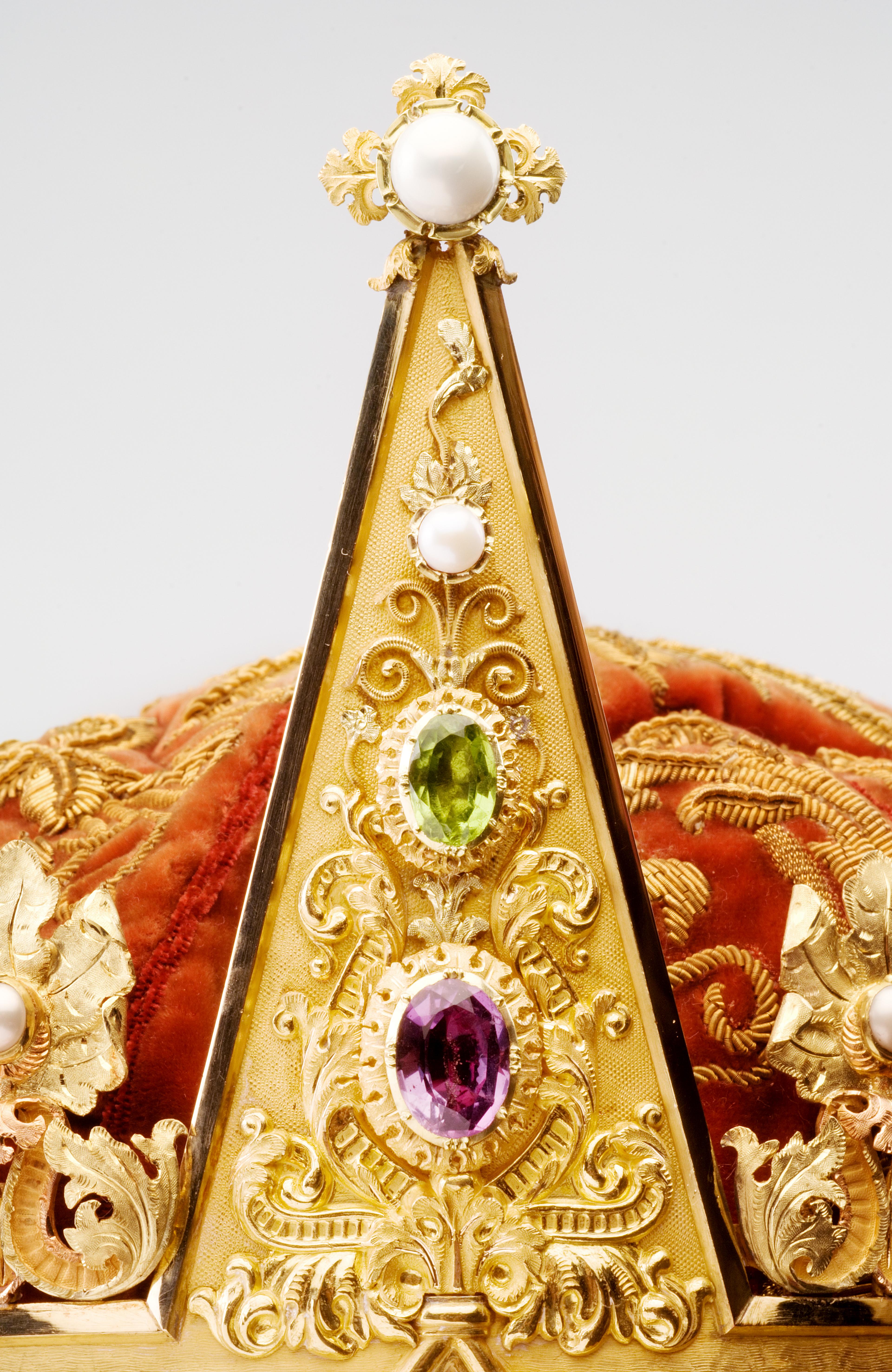
The Crown Prince's Coronet
The Crown Prince's Coronet
The Crown Prince's Coronet is the crown of the heir to the throne. It was made in Oslo in 1846 and is the only object of royal regalia produced in Norway. It was designed for Crown Prince Carl (later King Carl IV) in connection with the coronation of his parents, King Oscar I and Queen Josephine.
The coronet was fashioned by the goldsmith Herman Colbjørnsen Øyset of Christiania and designed by Johannes Flintoe, who also took part in the embellishment of the Royal Palace under construction at the time.
However, the Norwegian coronation of King Oscar I and Queen Josefine did not take place, and the Crown Prince’s Coronet has never been used.
Design
The Crown Prince’s Coronet is an open design consisting of eight cusped spikes decorated with gemstones and pearls. Each cusped spike has a large Norwegian freshwater pearl at the point. The crown ring, cusped spikes and ornaments in between are decked with flowers and leaves of pressed gold. The central stone is a faceted, oval amethyst.
The cap is sewn in violet velvet with embroidery of gilded silver thread.
Materials
The crown is made of multi-coloured gold inlaid with pearls, gemstones and polychrome glass. The pearls are the Norwegian freshwater variety; the gemstones are amethyst, perodite and citrine.
Height: 15 cm
Diameter: 18 cm
Weight: 1,030 g
The royal orb is a traditional symbol of monarchical power and symbolises the earth "held in the soverigns hand". Since Hellenic times, the globe has served as a sign of sovereign power. The Roman emperors used the globe as a symbol of their world domination, usually with the goddess of victory positioned on top. In the 400s the goddess was replaced with a cross, symbolising the sovereignty of Christ.
The tradition of dividing the orb into a lower half and two upper quarters symbolises the continents known in antiquity: Europe, Africa and Asia.
According to earlier tradition from the European continent, the royal orb served only as a symbol of the monarch's power. In 1568 Sweden’s King Erik XIV began a new tradition by including a royal orb as part of the regalia conferred on his wife. This tradition was carried on in Norway.
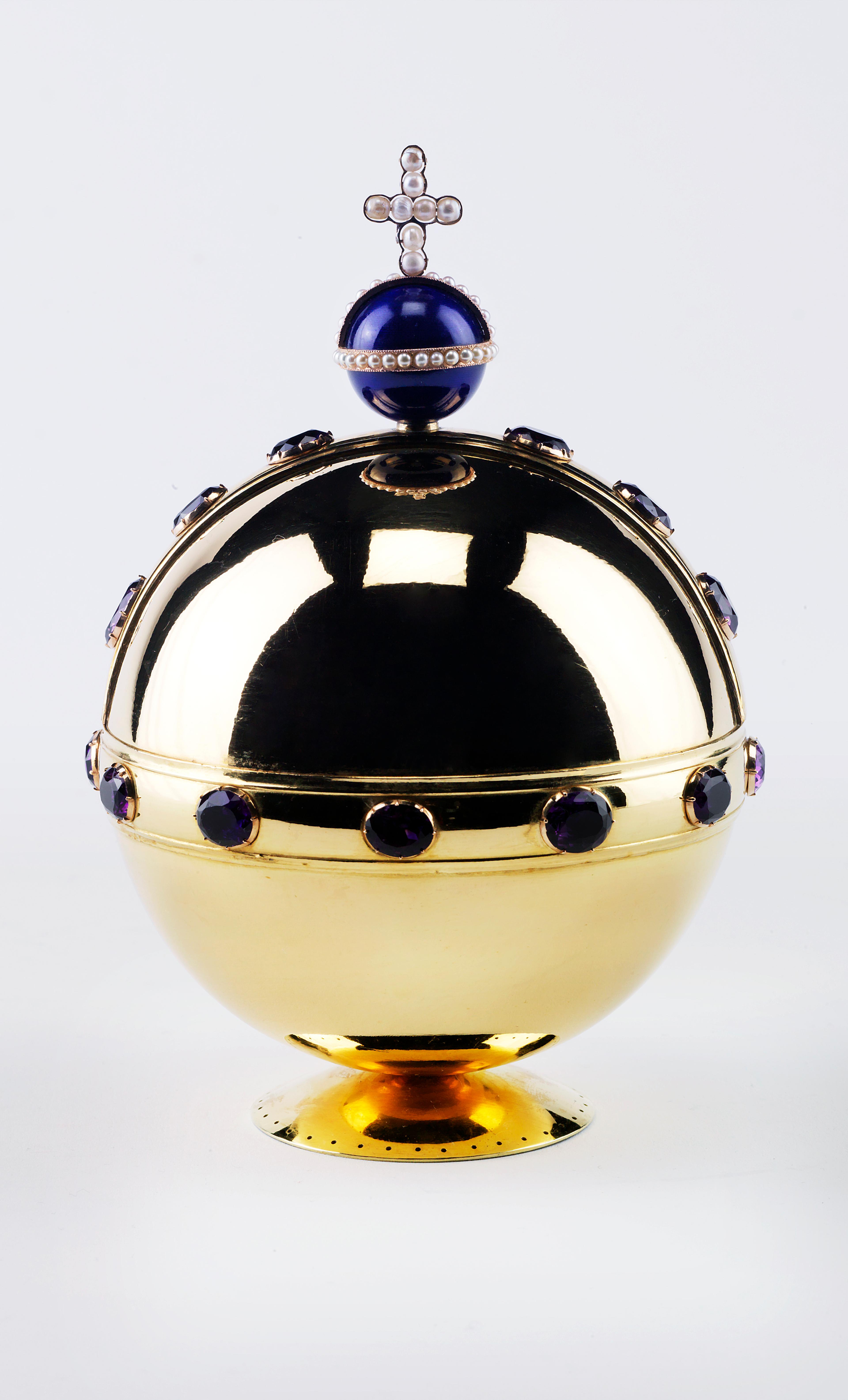
The Norwegian Regalia: The orbs
The Orbs
The Norwegian King's Orb was made by Adolf Zethelius in Stockholm in 1818 as part of the regalia commissioned by King Carl Johan for his own coronation. The Queen's Orb was made for the planned coronation of Queen Désirée in 1830.
The King's Orb
Fashioned of gilt silver, the King's Orb is divided by a horizontal gold band decorated with small gold roses. The upper half is divided by a corresponding vertical band. A miniature orb with an embossed Latin cross rests on top.
Height: 14 cm
Diameter: 10 cm
Weight: 384 g
The Queen's Orb
Fashioned in gilt silver, the Queen’s Orb was fashioned by Erik Lundberg in Stockholm. A band decorated with amethysts divides the orb down the middle. A corresponding band divides the upper half vertically in two. On the top rests a miniature orb of blue enamel, which is divided in half by a band of 30 small pearls. The cross on the top consists of eight small pearls.
Height: 16 cm
Diameter: 10 cm
Weight: 436 g
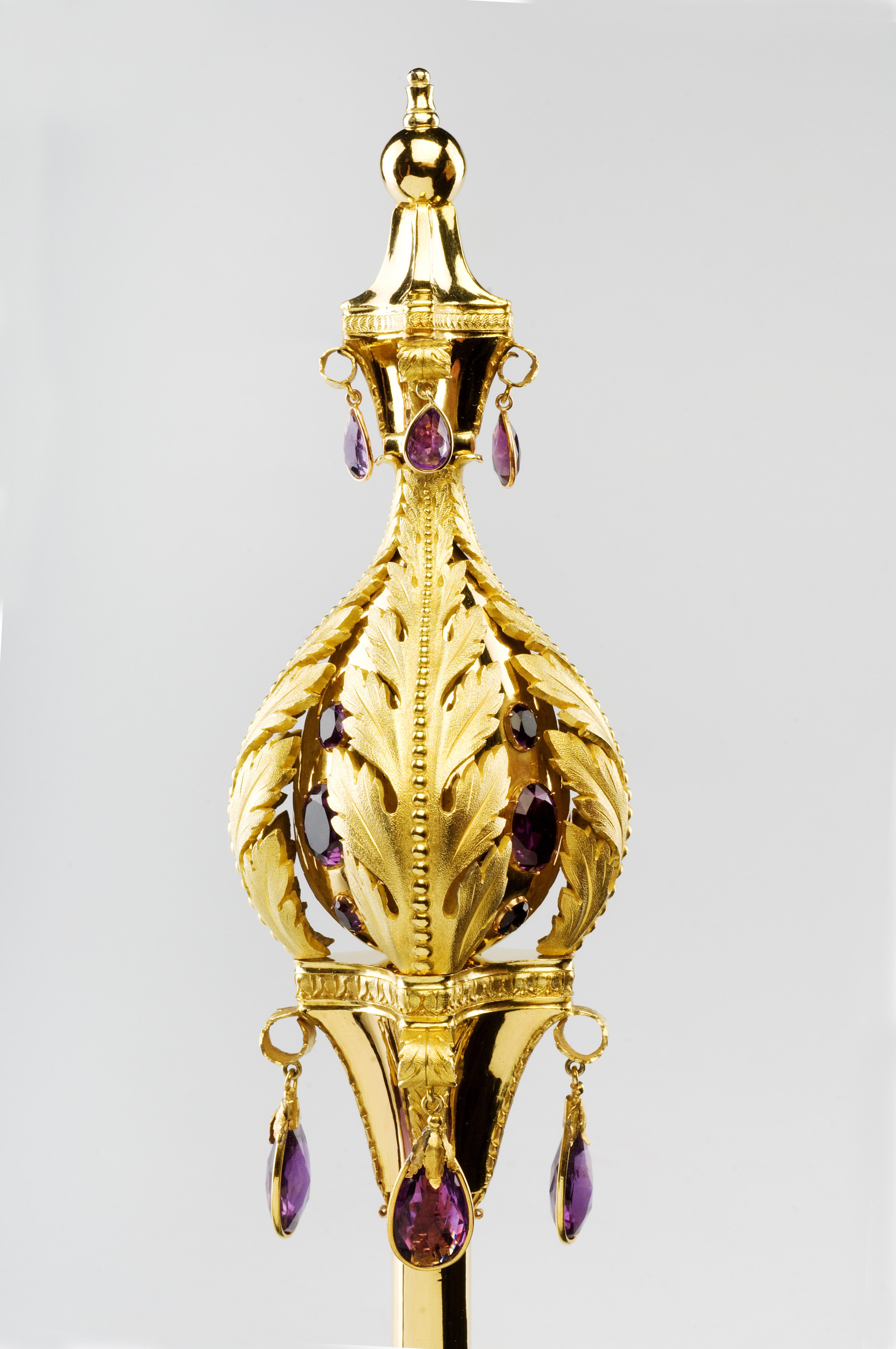
The Norwegian Regalia: Sceptres
The sceptres
A sceptre is an ornamental staff and a traditional symbol of the king's temporal authority. The Norwegian King’s sceptre was made by Adolf Zethelius in Stockholm in 1818 and is among the regalia financed by King Carl Johan for his own coronation. The Queen’s sceptre was made in Stockholm by Erik Lundberg for the planned coronation of Queen Desirée in 1830.
The King’s Sceptre
Fashioned of gilt silver, the King’s Sceptre is decorated with small roses similar to those on the royal orb. The ornamentation on the top of the staff consists of filigreed foliage with a miniature orb at the end.
Length: 75 cm
Weight: 700 g
The Queen's Sceptre
The Queen's Sceptre is made of gilt silver. More ornate than the King’s Sceptre, it has small amethysts and a sapphire inlaid in the handle. The top of the sceptre consists of four leaves that surround a core decorated with amethysts. Eight more amethysts hang down from the top.
Length: 70 cm
Weight: 574 g
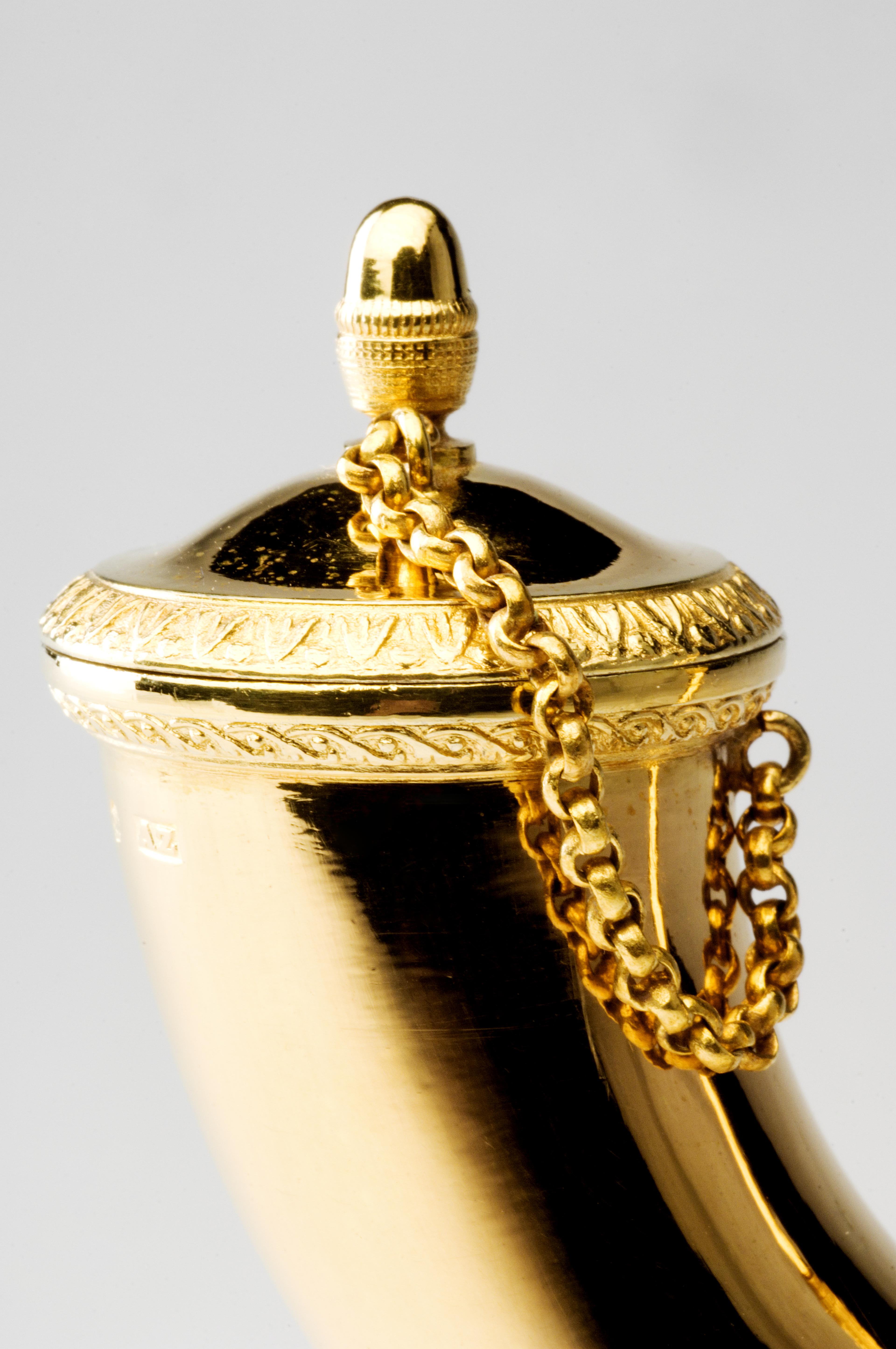
The Norwegian Regalia: The Anointment Horn
The Anointment Horn
The tradition of anointing the king originated in the Middle East. Based on Old Testament writings, the ceremony symbolised that the king was God’s chosen representative on earth.
Historically, consecrated oil was applied to the temples, forehead, breast and wrists of the sovereign to be crowned. This ceremony was viewed as the most important part of the coronation as it conferred the power of the Holy Spirit on the monarch, who was to bear the burden as the nation’s king.
Design
The Norwegian Anointment Horn was made by Adolf Zethelius in Stockholm in 1818. It was last used during the coronation of King Haakon VII and Queen Maud in 1906.
Made of gilt silver, the Anointment Horn is fashioned in the Empire style with a simple design and refined, sparse ornamentation. The handle of the horn’s lid is shaped like an acorn, and a small royal crown decorates the tip.
Height: 12.5 cm
Weight: 164 g
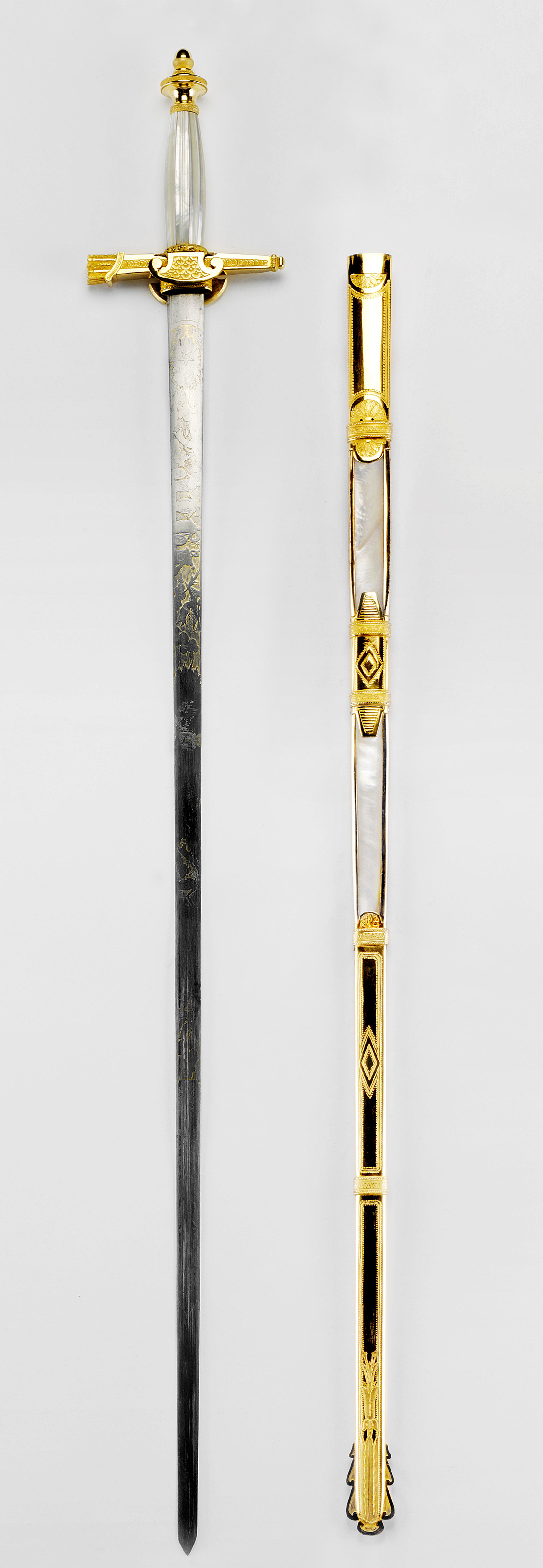
The Norwegian Regalia: The Sword of State
The Sword of State
The sword of state is a traditional symbol of military power and justice. Since the death of King Carl Johan in 1844, the sword has been placed on the monarch’s coffin alongside Norway’s Crown.
The Norwegian Sword of State originally belonged to King Carl Johan. French by birth, Carl Johan’s given name was Jean Baptiste Bernadotte. He made his military career under Napoleon, from whom it is said he received the sword upon his appointment as Marshal of France. Bernadotte was later elected Swedish crown prince and took the name Carl Johan. He is said to have carried the sword in the Battle of Leipzig in 1813, in which he fought against Napoleon, his former commander.
Design
Assuming the sword truly did belong to him when he served as the French Marshal, King Carl Johan had the blade, grip and sheath refashioned to reflect its new role as the sword of state.
The blade consists of steel engraved with symbols of the union between Norway and Sweden, the Norwegian coat of arms and the Three Crowns of Sweden. The grip is made of gilt bronze with inlaid mother-of-pearl, and ends in a knob shaped like an acorn.
The sheath is decorated with engraved oak leaves and mother-of-pearl.
Length: 110 cm
Weight: 1,300 g
